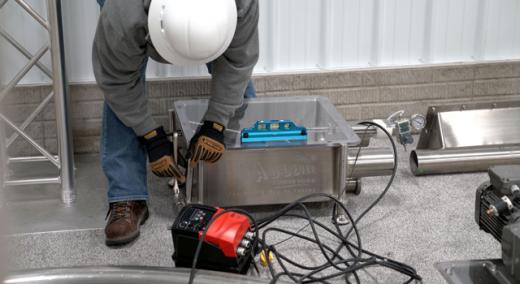To move delicate products or powders, most processors do extensive homework before purchasing a tubular drag-cable conveyor to ensure that it meets their needs for function and price. After the purchase, the conveyor must be expertly assembled and tested to ensure smooth production startup and continued performance.
|
ADVERTISEMENT |
However, typical third-party contractors that install plant systems might need to become more familiar with specialized conveyors, and thus are more prone to make costly errors. A more prudent choice is using the OEM’s team of experienced technicians. The OEM’s experts have the advantage of designing the specialized conveyor and understanding its installation, operational requirements, and potential problem areas.
…

Add new comment